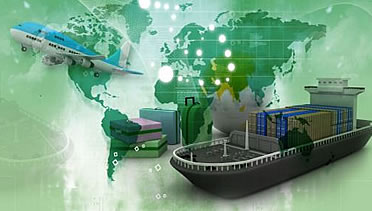In order to investigate the different levels of experience and maturity required for sustainability practices and what are the benefits that these practices bring into the organization, APICS conducted a survey over 9000 supply chain professionals. The evolving new technologies and improved processes along with the stakeholder preferences, sustainability has become the integrated process with the traditional supply chain.
It is being defined in a better way by means of metrics, performance and global standards across the industries.
The triple bottom line (TBL) is a measure of the supply chain sustainability. The bottom lines are social, environmental, and financial and the measures are people, resources and profit (or the three Ps: people, profit, and a planet. So, the sustainability, in this case, is ensuring the long-term supply of people, natural resources and profit. Often organizations tend to put people and profit leaving the planet behind. Key to the success of the senior management lies in the ability to influence the rate of adoption of sustainability practices.

In order to advance sustainability at your organization
• Define and execute a clear definition of sustainability across the organization, from top management to floor level.
• Regulate the supply chain strategy and technologies to support the organizational strategy in terms of sustainability.
• Continuous improvement on supply chain maturity practices based the impact, investment and metrics or measures.
The practice of supply chain sustainability depends on the values of supply chain practitioners and their organizations. Well-defined standards, industrial practices and published guidance across the world are the way out for the companies to advance the supply chain sustainability globally.

Survey reveals that the importance for merging the supply chain sustainability into the organization strategy is increasing due to various motivational factors like,
• Brand administration
• Reduction of cost
• The demand for customers
• Expectations of investor
• Government regulations
The triple bottom line sustainability proposed that people, planet, and profit are the terminal supply chain considerations. In supply chain terms, the short and long terms prosperity is being gained by the production and consumption of goods and services hence Supply Chain and Operations management intercross with the standards of triple bottom line.
With the guidance that is available across all the levels of supply chain management, there are number of resources that supports the Supply Chain Sustainability. Some examples include
• United Nations (UN) Global Compact
• Global Reporting Initiative (GRI)
Supply chain risk is growing with sophistication and the decisive importance because of the rising view that the risk enhanced supply chain will capture the market contribution from less enhanced competitors when undergoing the same risk event.
The strength of the supply chain sustainability depends on the overall organizational strategy and supply chain strategy and there are number of policies and best practices to implement and evaluate the sustainability across the organizations.
Source: http://www.apics.org/docs/default-source/industry-content/sustainability-report_short.pdf?sfvrsn=0
Source: http://www.apics.org/docs/default-source/shopapics/sustainability_folio.pdf










